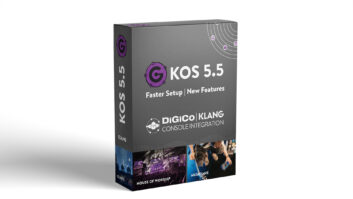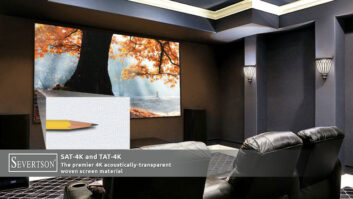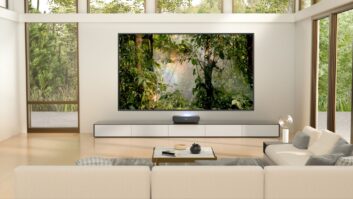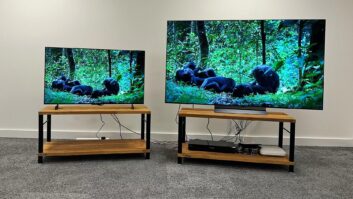LAS VEGAS – As many expected, International CES proved to be a launching pad for the next phase of the 4K Ultra HD TV rollout, which by all appearances is knocking on the door of mainstream acceptance and 4K gold.
This go round, TV manufacturers are coming around to the demands of Hollywood, delivering advanced new levels of color and high dynamic range that directors strive to include in their productions for professional theaters.
At the same time, the efforts have sparked new levels of industry debate requiring the formation of a multiindustry alliance to settle on a common picture quality target for sets and productions.
The following are some of the top takeaways in Ultra HDTV from International CES:
1 Quantum dot technology is here; OLED is why: If you don’t think LG’s rapid advancement of OLED TV technology is scaring its competition, take a look at the biggest trends to emerge in new TV tech at International CES this year – thinny-thin screen sizes, bright vibrant colors, low power consumption, almost astronomical contrast ratios and deep black levels.
With the exception of the latter two, some of the new LED LCD TV approaches did a very good job at matching or besting many of the benefits of OLED TVs. And the new technologies promise significantly lower prices than comparable OLED TVs can deliver. But LG said it is making great strides all the time at getting those OLED prices down, so the battle may not be a long one. If OLED has a weakness, it may be in stretching the color gamut as some of the newer LED sets are doing, but the technology is young.
2 Get ready for the Wonderful World of Color Gamuts: Quantum dot technology with its nanocrystals and special film formulations was front and center in several manufacturer’s flagship and step-up LED LCD TV lines for 2015. Even LG, the king of OLED TV, introduced two different approaches for wider color space in its LED LCD TVs, one of which was quantum-dot-based. Other approaches were introduced as well, including Sharp’s Spectros technology, which the company claimed will produce better colors than typical quantum dot technologies can approach, and P&F USA, using the Philips brand, stunned a few attendees by demonstrating a large flat-panel TV using LED backlighting enhanced with red laser technology, which is said to be one method of getting close to the International Telecommunications Union’s immense REC-2020 color standard. Still, all of these approaches seem to be targeted at achieving slightly different levels of colorimetry, and a standards-setting alliance is promised to help establish some common ground.
3 Home, home on the High Dynamic Range: Perhaps even more important to picture quality than expanding the color gamut is enhancing the high dynamic range (HDR) – offering a better balance between the darkest and brightest parts of the picture to expose hidden details washed out by conventional TV displays. Long a feature in advanced still cameras, HDR offers a lot of room for creativity and imagery, and like wide color gamut, there are a variety of approaches and standards for HDR. Some very big companies – namely Dolby and Technicolor – have invested heavily in getting their respective standards positions adopted by display makers and content producers alike, and both are part of the new UHD Alliance to help craft the next.
4 8K TV is on the way: As this industry loves to do, manufacturers looking to push the superiority of their 4K Ultra HDTV prowess did so by showing what they are working on for the next big evolutionary step – 8K TV.
Companies and parties including Panasonic, Samsung, MHL and Sharp all had prototype 8K display monitors on display to dazzle attendees with big-screen brilliance, albeit at the risk of undercutting the displays they are trying to sell right now.
Consumers confused over whether it makes sense to step up to 4K Ultra HD TV now must ponder if it’s worth waiting for 8K. The short answer is: “Don’t hold your breath.”
First, it’s going to take more than a few years. Although 8K is coming, it’s initially expected to be mostly an attraction for the Asian markets, where 8K broadcast standardization efforts are already underway from Japan’s NHK.
Pixel-counting Chinese consumers, meanwhile, seem to be following the pattern of wattage-happy U.S. stereo enthusiasts from the ’60s – the more the better, regardless of how it looks or sounds.
In fact, NHK used the IBC Content Everywhere MENA show shortly after International CES to showcase its Super Hi-Vision system supporting 8K resolution, including “the world’s smallest 8K display.” The show marked the first time a portable version of the technology was seen outside Japan.
Despite the small screen size, from a home entertainment perspective 8K is going to be about better pictures on really big screens – think projected images or 90-inch flat-panels.
5 4K projectors anyone? If there was ever a technology ideally positioned for 4K Ultra HD, its video projection. Projectors routinely produce screen sizes of 100 inches to 200 inches or larger, where greater pixel density has an immediately perceivable impact. Yet, only one manufacturer is producing a projector microdisplay technology for home cinema that fits within the national budget. Hello? McFly? Kudos go to Sony for continually delivering a practical solution to 4K Ultra HD TV projection for the home using its 4K SXRD microdisplays. To the consternation of many projector manufacturers, both Texas Instruments (DLP) and Epson (3LCD) have yet to deliver an affordable 4K Ultra HD microdisplay for the home using their respective technologies, and Sony, in the meantime, took advantage at CES by introducing a next-generation Bravia 4K UHD SXRD model. But hope may be on the way for DLP and 3LCD purists alike: One projector manufacturer exec said he has been told a home-based 4K DLP chip solution may be on the way by the end of the year (no official word is yet available from DLP), and Epson is on record saying it plans to have 4K 3LCD solution in time for the 2016 Rio Olympics. In the meantime, watch those Sony 4K Ultra HD projector market share numbers grow stronger.













